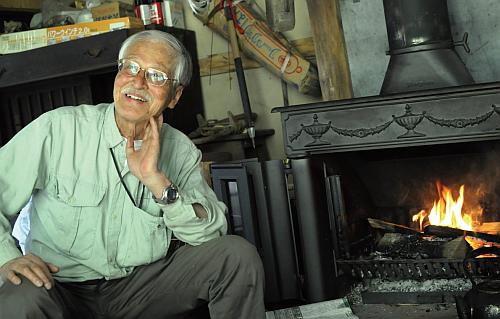|
<Obituary>
Prof. Akisato Nishimura (Formerly Known as Akisato Toyoshima): A Pioneer of Chimpanzee Research in Tanzania
Michio Nakamura
Graduate School of Science, Kyoto University, Japan 
Prof. Akisato Nishimura (his former family name was Toyoshima), one of the pioneer researchers of chimpanzees in Tanzania, passed away on 23rd December, 2018 at the age of 80. Hereafter I will refer to him as “Kentatsusan”, as he was affectionately called by his friends, colleagues, and students (because the kanji characters of his first name “Akisato” can also be read as “Kentatsu”). Readers of PAN may well be aware that Kinji Imanishi and Jun’ichiro Itani started the Kyoto University African Primatological Expedition (KUAPE) in Tanzania (at the time, Tanganyika) in 1961 in order to habituate and study wild chimpanzees. They set up a research camp in Cape Kabogo on the shore of the Lake Tanganyika. At that time, Kentatsu-san was a graduate student in Imanishi and Itani’s lab. and thus was sent to the Kabogo Camp in 1962. He worked on Kabogo chimpanzees together with his senior classmate, Shigeru Azuma, until 1963. The habituation of Kabogo chimpanzees was not successful due to the very steep terrain, but their study efforts have left precious early records of the ecology and social structure of wild chimpanzees that were least known at that time (Azuma & Toyoshima 1961–1962; 1965; Nishimura & Azuma 1977). Their pioneering spirit to elucidate chimpanzee social structure was inherited by various researchers and students, which finally led to the KUAPE team’s success in habituating chimpanzees in the Mahale Mountains in 1965. Later, he left a note regarding the early days of KUAPE research (Nishimura 2012). This is a very important record about the historical background of chimpanzee studies in Tanzania. 
Kentatsu-san later shifted his target species to woolly monkeys, muriquis, and spider monkeys in Colombia and Brazil (e.g., Nishimura 2003). Regarding his academic career, he served as an assistant professor at the Primate Research Institute of Kyoto University (1970 to 1977) and later became an associate professor of Doshisha University in 1977. He was promoted to the full professor of Doshisha University in 1989 and supervised students until his retirement in 2004. Because he lived in Kyoto, he often visited the Laborator y of Human Evolution Studies at Kyoto University where many students, including myself, worked on Mahale chimpanzees. Every year in the spring time, we have our laboratory’s annual mountain vegetable (sansai tori) event. After collecting many species of edible plants, we cooked them in the moutain cabin that Kentatsu-san owned in Kurama, a rural town in the mountains north of Kyoto City, and enjoyed them as tempura with cold beer cooled in the stream by his cabin. Kentatsu-san will be greatly missed by everybody who knew him and worked with him. References Azuma S, Toyoshima A 1961–1962. Progress report of the survey of chimpanzees in their natural habitat, Kabogo Point area, Tanganyika. Primates 3: 61–70. https://doi.org/10.1007/BF01795096 Azuma S, Toyoshima A 1965. [Chimpanzees in Kabogo Point Area, Tanganyika.] In: [Monkeys and Apes: Sociological Studies.] Kawamura S, Itani J (eds), Chūō-Kōron-sha, Tōkyō, pp. 127–163, in Japanese. Nishimura A 2003. Reproductive parameters of wild female Lagothrix lagotricha. Int J Primatol 24: 707–722. https://doi.org/10.1023/A:1024681703616 Nishimura A 2012. [The start of African studies: Early days of African ape expeditions.] In: Reports of the 56th Primates Meeting. Japan Monkey Centre, Inuyama, pp. 2–16, in Japanese. Nishimura A, Azuma S 1977. [Chimpanzees of Kabogo.] In: [The Chimpanzees.] Itani J (ed), Kōdan-sha, Tōkyō, pp. 59–151, in Japanese. Back to Contents |